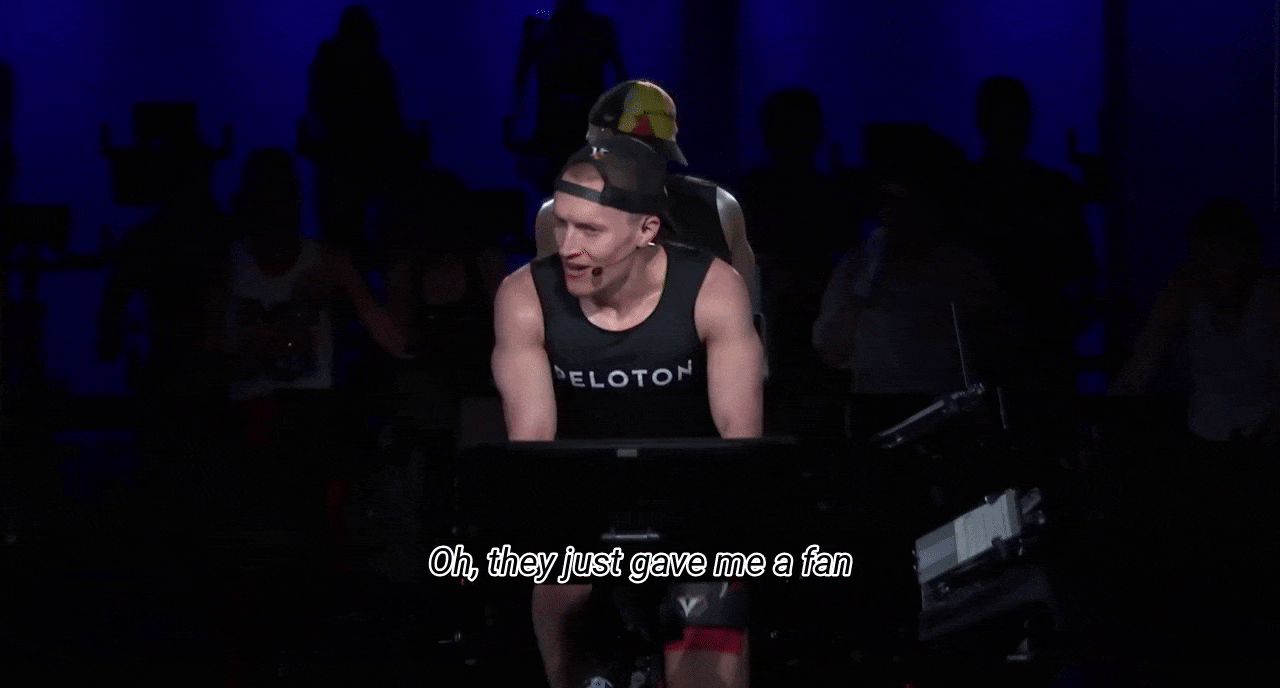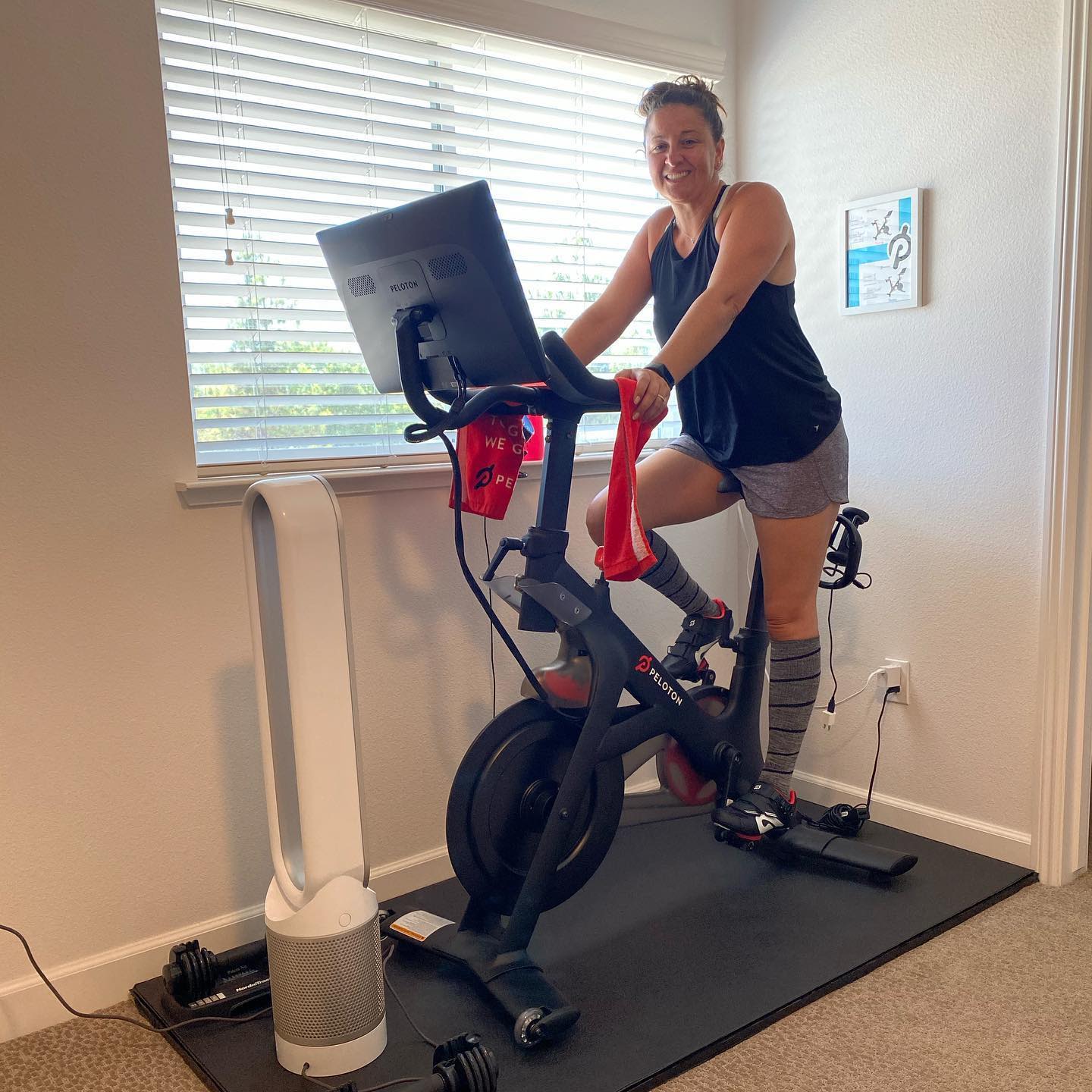Melody E., a Peloton Member from Clearwater, Florida, has an elaborate method for keeping cool while exercising on summer days, when the temperature and humidity are often in the 90s.
“Our Bike and Tread are in the garage side-by-side,” she says. “Multiple fans are a must, one on each side. If it's not raining the garage is definitely open along with the side door to get a cross breeze. Screen doors are also helpful to keep bugs out. It's just plain hot, but it beats being outside in direct sunlight. I’m always finishing at least one water bottle if not more. The long-term goal will be to have A/C in the garage, but for now a quick dip in the pool after workouts does the trick.”
While eye-popping, Edwards’ strategy is spot-on for preventing dehydration, heat exhaustion and heat stroke, three issues some riders and runners may experience when outside temps and humidity soar – even when working out inside, since outside temperatures and weather changes can cause increased humidity in the home.

“Heat stroke, a very-high body temperature over 103 degrees Fahrenheit, is the most serious and if it's not treated right away, it can be fatal,” says Alix Turoff, MS, RD, CDN, CPT. “Heat exhaustion is a more mild form of heat-related illness that may develop after multiple days of exposure to high temperatures coupled with inadequate fluid hydration and fluid replacement. Exercising in a hot environment can potentially trigger heat exhaustion.” If untreated, heat exhaustion can progress to heat stroke, says Turoff.
Then there are heat cramps.
“Heat cramps can also occur after performing strenuous activity, especially in warm weather,” says Turoff. “If you tend to sweat more during exercise, you might be more prone to heat cramps which tend to be muscle pains or spasms in the stomach, arms or legs. Heavy sweating can deplete the body of salt and moisture which then leads to muscle cramps.”
Heavy sweating – especially among endurance riders or runners – can also affect one’s hydration levels. By not drinking enough water during exercise you might experience increased thirst, decreased/less frequent urination, dry skin, fatigue, light-headedness, dizziness, confusion, dry mouth, and increased heart rate.
So, what can you do to avoid heat-related health issues while enjoying your Bike and Tread?
Water throughout the day is key to staying hydrated. While “there's no one fluid recommendation that works across the board,” says Turoff, “you'll often hear the recommendation of eight cups or 64 fluid ounces of water per day, or to drink half your body weight in fluid ounces of water each day. These are decent recommendations to start with but some people might need more or less water than this and because our thirst mechanism is regulated by the brain, our bodies tend to do a good job of letting us know when we should drink.”
To prevent dehydration, you want to make sure that you're consuming more fluid than you're losing via sweat. Exercising vigorously and sweating a lot?
“You may want to consider adding a sports drink that has electrolytes as electrolytes are lost in sweat,” says Turoff. “While there's no fool proof fluid intake for everyone, a good rule of thumb is to drink enough fluids each hour to maintain normal color and amount of urine output. You'll also want to be mindful of your alcohol and caffeine intake as these may further dehydrate you.”
As for heat exhaustion and heat stroke, stay hydrated, plan your harder workouts for less-hot and humid days, or work out in the morning or evening when it’s cooler.
“Other things you can do to help prevent overheating,” says Turoff, “is to exercise in an air-conditioned environment, wear lightweight clothing and take cool showers or baths afterward.”
